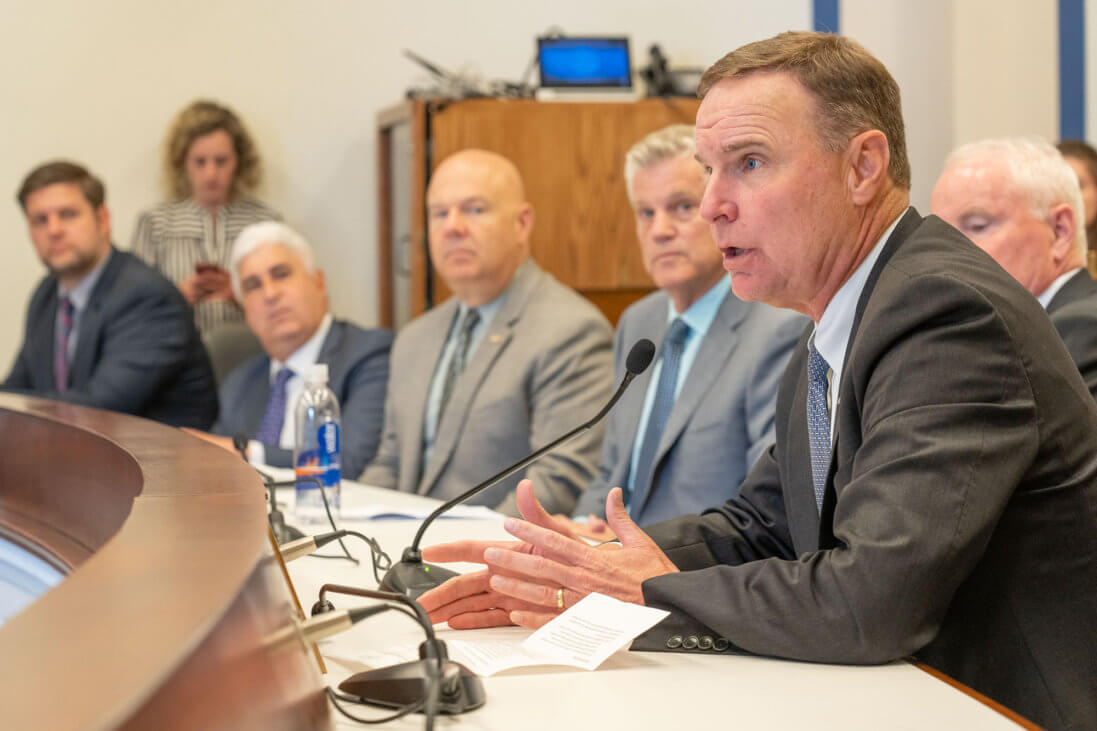
July 18, 2019
General aviation (GA) – including business aviation – is a vital American industry, and U.S. Reps. Sam Graves (R-6-MO) and Marc Veasey (D-33-TX), co-chairs of the House GA Caucus, hosted a briefing on July 17 with congressional staffers and industry leaders to discuss pertinent industry issues.
“We did pass a great FAA reauthorization [bill] last year,” Graves said to open the briefing, adding that there were still issues needing attention, such as increasing Airport Improvement Program funding, ensuring access for all aviation stakeholders and other matters requiring continued focus.
“What’s unique about [general aviation] is that it touches everybody’s district,” said Veasey in stressing the industry’s importance to the U.S. “[General aviation] is something that truly touches everyone.”
“It may be a tiny single-engine airplane, it may be an intercontinental jet, but there are literally tens of thousands of companies all over the United States, in every congressional district, that are using the speed, and the efficiency, and the ability to reach remote markets by relying on general aviation to meet some portion of their travel challenges,” said NBAA President and CEO Ed Bolen.
“General aviation means good jobs. There are over 1 million people employed in the United States in the general aviation community,” he added. “General aviation is also important to economic development. There are over 5,000 public-use airports in the United States. That’s 5,000 communities where companies can locate and operate businesses, because they can use general aviation aircraft to get to and from the markets where they need to go.”
Bolen highlighted the humanitarian efforts made every day – and especially in times of crisis – by business aviation pilots, companies and others in the general aviation industry.
Industry Challenges
Bolen and others also discussed challenges facing the industry, and the importance of embracing new, environmentally friendly technology.
Workforce issues, and how to meet the needs of future industry professionals was highlighted by all aviation leaders, with many sharing the programs their associations are promoting to expose young people to possible general aviation careers.
Bolen noted that the stability provided by the long-term FAA Reauthorization Act of 2018 “now gives us a chance to really focus on those things that can help stimulate general aviation – getting a new generation of workforce professionals is very important to all of us. The FAA bill made some provisions available. We look forward to working with all of you to help us attract and retain a whole new generation of aviation enthusiasts and aviation professionals in the United States,” he said.
When the panel was asked about regulations, Bolen took the opportunity to address the upcoming Jan. 1, 2020, ADS-B mandate, and the need to ensure the new technology allows operators to opt out from having their flights monitored by anyone, anywhere in the world, with the right surveillance equipment. The need for such an allowance has long been recognized by Congress, and contained in several pieces of legislation, starting from 2000.
“We’ve been waiting on the FAA to come forward with a rule” on this matter,” Bolen said. “You still have a right to privacy in the airplane, just as you do in your car. It’s important for air traffic to know there is an airplane, even the size and type of airplane, but it has long been recognized that there are very legitimate concerns when anyone in the world can see, in real-time, who owns the airplane, or who’s in the airplane.”
Issues such as integrating drones into the National Airspace System, the potential for urban air mobility and other emerging technologies also were discussed during the briefing.
In addition to Bolen, panelists included: Mark Baker, president and CEO, Aircraft Owners and Pilots Association; Gary Dempsey, president, National Air Transportation Association; Paul Feldman, vice president of government affairs, General Aviation Manufacturers Association; Doug Macnair, vice president of government relations, Experimental Aircraft Association and Cade Clark, vice president of government affairs, Helicopter Association International.


 International Business Aviation Council Ltd.
International Business Aviation Council Ltd.